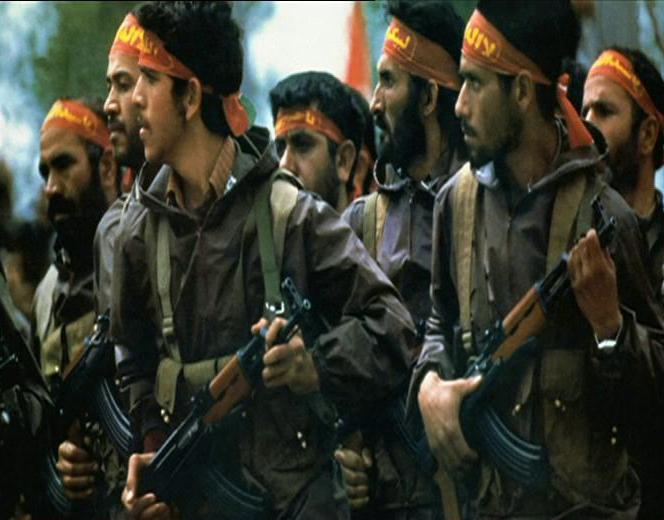by Kenneth Timmerman

President-elect Donald Trump was right during the campaign to call the Iran nuclear agreement “the worst deal ever negotiated” by the United States government.
Not only did it reward a terrorist state with $100 billion of frozen oil revenues (some say, $150 billion), it dismantled an extensive armature of international sanctions that had cut Iran’s oil exports in half, banned it from the international financial system, and was beginning to threaten the regime with domestic unrest.
Obama tried to set this bad nuclear deal in concrete by incorporating most of its measures into a United Nations Security Council Resolution.
This will make its undoing more complicated than some analysts imagine. It’s not just a piece of paper President Trump can rip up, as a group of American nuclear scientists imply. The international sanctions regime Obama destroyed took years to build and cannot be reconstructed in a day.
But the incoming president and Congress have other options for ratcheting up pressure on the Iranian regime, options that can be enacted unilaterally.
A group of conservative leaders released a letter to House Foreign Affairs Committee chairman Ed Royce (R-Calif.) on Thursday, commending him for a resolution he introduced in the final days of the last Congress on the restitution of or compensation for property wrongly confiscated by the Islamic Republic of Iran.
“Totalitarian regimes historically have confiscated property from individuals whose sole ‘crime’ consisted of supporting the previous government,” the letter states.
“When the Islamic regime seized power in 1979, it followed in the footsteps of these earlier totalitarians.”
The letter, and spearheaded by the Foundation for Democracy in Iran, which I chair, recalled Congressional action against previous cases of unjust expropriation, most notably the Helms-Burton Act — also known as the Cuban Liberty and Democratic Solidarity Act of 1996 — which penalized foreign companies trafficking in property stolen from Cuban nationals.
“Pro-Castro advocates screamed that Helms-Burton would cause irrevocable harm to the United States with friends and allies around the world. Nothing of the sort occurred,” the letter states.
“We believe the time has come to envisage a similar measure for the victims of the Islamic Republic of Iran, many of whom have become United States citizens, whose properties were unjustly expropriated.”
Signatories to the letter include Colin A. Hanna, President of Let Freedom Ring; Admiral James “Ace” Lyons, Jr, former Pacific Fleet commander; Frank Gaffney, President and CEO of the Center for Security Policy; Judson Phillips, founder of Tea Party Nation; Amy Ridenour, Chairman of the National Center for Public Policy Research; Ellen Sauerbrey, former Assistant Secretary of State for Population, Refugees, and Migration; and myself.
The letter also won support and was signed by Iranian-American human rights advocates and journalists and by leaders of the American Middle East Coalition for Trump.
On July 7, 1979, the new Islamic state in Iran issued a decree seizing the assets of 51 supporters of the previous regime and their families. A few weeks later, a revolutionary Court issued a separate order confiscating the assets of another 209 individuals and their families.
According to court documents the claimants provided to me, the properties seized included major factories and industrial conglomerates, hotels, private residences, real estate, land, stock, and other holdings, which today are worth more than $100 billion.
In all, thousands of Iranians were directly robbed by the Islamic regime, and millions more were terrorized with the threat of confiscations.
Many of these individuals subsequently fled to America and became U.S. citizens. But few were American citizens at the time of the revolution, and thus have been unable to seek restitution through the Iran-U.S. Claims Tribunal in The Hague, or through U.S. courts.
Their assets were turned over to para-state foundations, known as “bonyads,” which are owned or controlled by the Supreme Leader or the Islamic Revolutionary Guards Corps (IRGC). Despite the extensive sanctions relief included in the bad Iran deal, the IRGC continues to be subject to United States government sanctions because it kills Americans in state-sponsored terror attacks around the world.
Ordinary Iranians understand that the ruling clerics have plundered their country. How else could a village cleric such as “Supreme Leader” Ali Khamenei personally own a commercial empire the U.S. Treasury has estimated to be worth more than $40 billion? A separate 2013 Reuters investigation found that the property confiscations on behalf of Iran’s clerical leadership were about $95 billion.
A Congressionally-enacted Iran Assets Recovery Plan would be a powerful weapon the ruling clerics in Iran could not ignore.
Not only would it bring justice to some of the many victims of the Islamic state in Iran, it would put the Iranian regime’s foreign partners on notice.
Traffic in stolen property at your peril. A regime founded on theft will end up bankrupt, in jail, or dead.
First published in The Hill.







